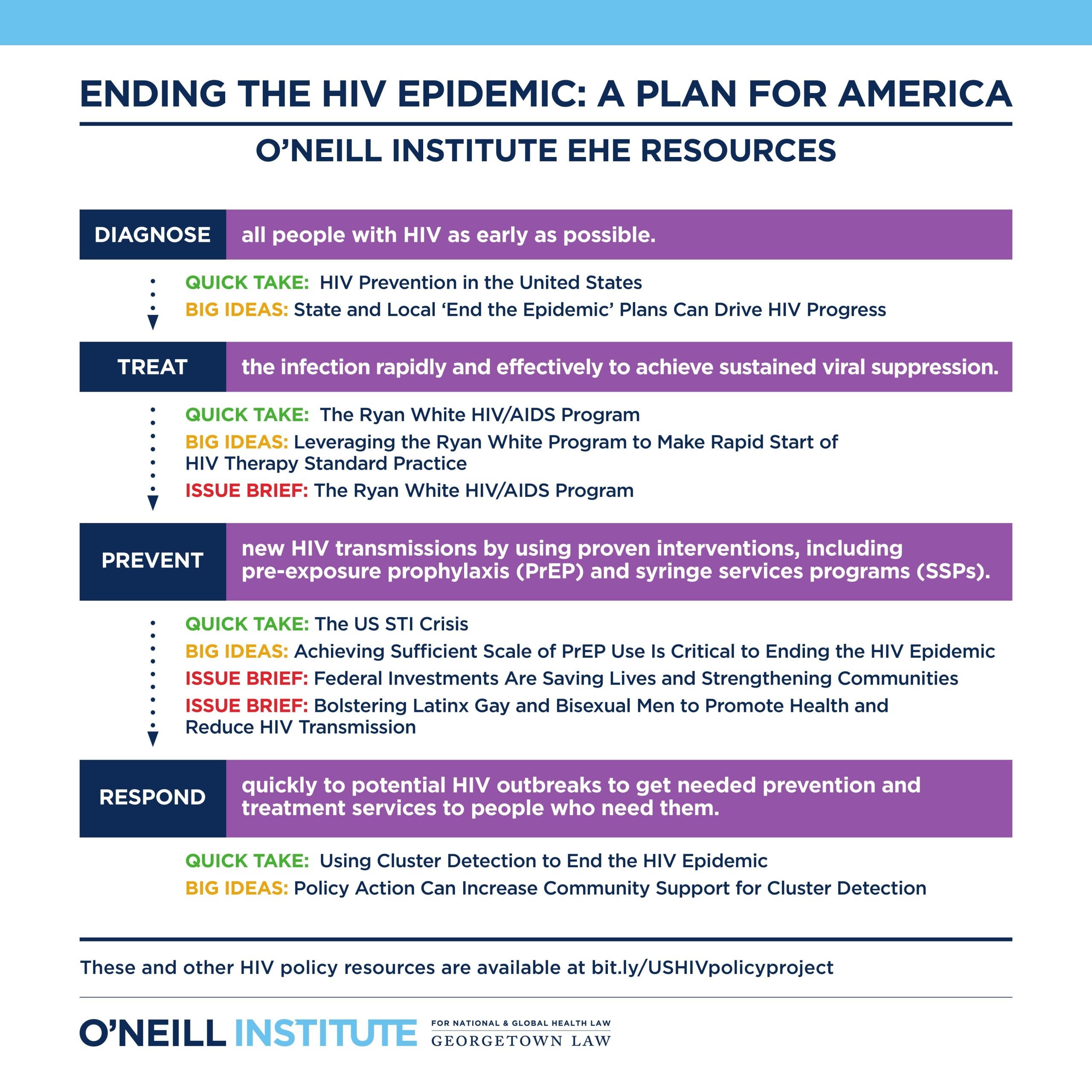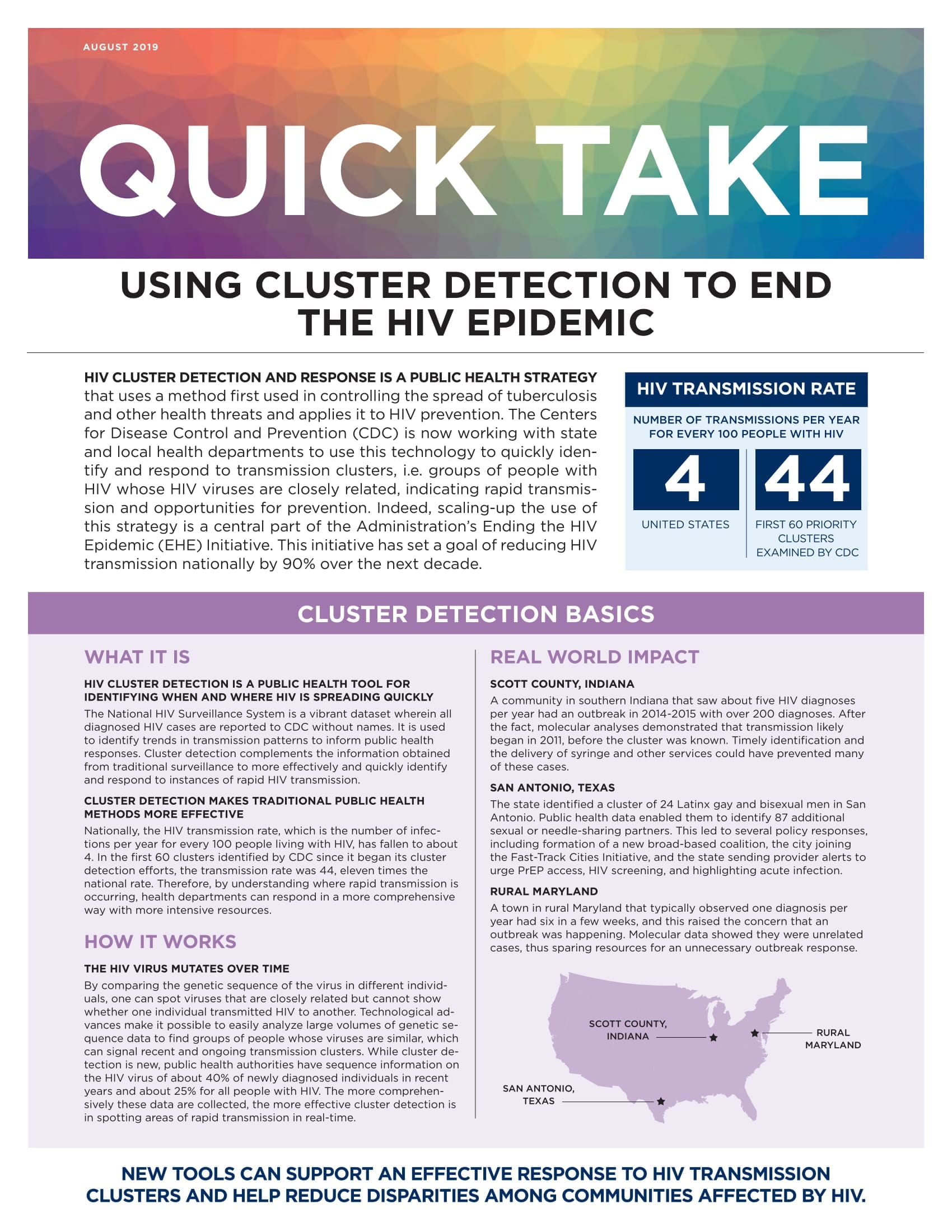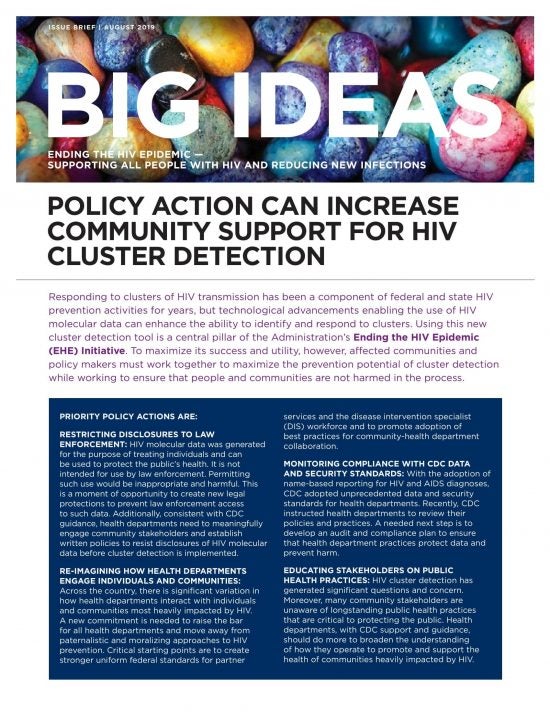 Today, the Infectious Diseases Initiative at the O’Neill Institute released three new publications. The publications are intended as resources to support the effort to end the HIV epidemic in the United States. President Trump announced his Administration’s Ending the HIV Epidemic (EHE) Initiative in this year’s State of the Union address, with the goal of reducing new HIV infections by 90% over 10 years. The EHE initiative includes four pillars: (1) diagnose all people with HIV as early as possible; (2) treat HIV infection rapidly and effectively to achieve sustained viral suppression; (3) prevent new HIV transmissions by using proven interventions, including pre-exposure prophylaxis (PrEP) and syringe services programs; and (4) respond quickly to potential HIV outbreaks to get needed prevention and treatment services to people who need them.
Today, the Infectious Diseases Initiative at the O’Neill Institute released three new publications. The publications are intended as resources to support the effort to end the HIV epidemic in the United States. President Trump announced his Administration’s Ending the HIV Epidemic (EHE) Initiative in this year’s State of the Union address, with the goal of reducing new HIV infections by 90% over 10 years. The EHE initiative includes four pillars: (1) diagnose all people with HIV as early as possible; (2) treat HIV infection rapidly and effectively to achieve sustained viral suppression; (3) prevent new HIV transmissions by using proven interventions, including pre-exposure prophylaxis (PrEP) and syringe services programs; and (4) respond quickly to potential HIV outbreaks to get needed prevention and treatment services to people who need them.
Two of our publications concern using HIV cluster detection tools to identify and respond to instances of rapid HIV transmission more effectively. Cluster detection is possible because HIV-treating providers order drug resistance tests as a routine part of clinical care. Laboratories that conduct these tests are required by law to report this information to state health departments. By comparing the genetic sequence of the virus in different individuals, one can spot viruses that are closely related but cannot show whether one individual transmitted HIV to another. Technological advances make it possible to easily analyze large volumes of genetic sequence data to find groups of people whose viruses are similar, which can signal recent and ongoing transmission clusters.
 Cluster detection allows for a better description of the scope and connectivity of situations in which HIV transmission is occurring and thereby enables comprehensive and effective responses. This tool supports health departments to identify gaps in HIV prevention and address those gaps through targeted provision of services, including HIV testing, linkage to care, partner services, condoms and PrEP, syringe services and other harm reduction services, and outreach to affected communities. However, this tool also raises concerns about privacy and the potential use of cluster detection information to prosecute people living with HIV for exposing others to HIV.
Cluster detection allows for a better description of the scope and connectivity of situations in which HIV transmission is occurring and thereby enables comprehensive and effective responses. This tool supports health departments to identify gaps in HIV prevention and address those gaps through targeted provision of services, including HIV testing, linkage to care, partner services, condoms and PrEP, syringe services and other harm reduction services, and outreach to affected communities. However, this tool also raises concerns about privacy and the potential use of cluster detection information to prosecute people living with HIV for exposing others to HIV.
The first of the two cluster detection publications is entitled Quick Take: Using Cluster Detection to End the HIV Epidemic. This two-page Quick Take document provides a brief introduction to HIV cluster detection and highlights both its promise and risks. The intended audience for the Quick Take document is people with little or no knowledge about cluster detection, including congressional staff, health department staff, and community stakeholders.
 The second of the two cluster detection publications is entitled Big Ideas: Policy Action Can Increase Community Support for HIV Cluster Detection. This Big Ideas document is intended for people engaged in policy. It highlights four critical actions where community stakeholders and public health officials can work together to minimize risks associated with cluster detection and broaden support for its use. A principal recommendation is to enact a number of policy changes to ensure that HIV molecular data collected for cluster detection is not disclosed to law enforcement. Other recommendations include promoting meaningful partnerships between communities and health departments, ensuring data and security compliance, and educating stakeholders on public health practices.
The second of the two cluster detection publications is entitled Big Ideas: Policy Action Can Increase Community Support for HIV Cluster Detection. This Big Ideas document is intended for people engaged in policy. It highlights four critical actions where community stakeholders and public health officials can work together to minimize risks associated with cluster detection and broaden support for its use. A principal recommendation is to enact a number of policy changes to ensure that HIV molecular data collected for cluster detection is not disclosed to law enforcement. Other recommendations include promoting meaningful partnerships between communities and health departments, ensuring data and security compliance, and educating stakeholders on public health practices.
With cluster detection being a primary focus in the EHE Initiative, taking concrete steps to minimize the risks to individuals and communities is essential. If no steps are taken, people with HIV and affected communities may resist cluster detection, and its potential benefits will not be fully realized.



